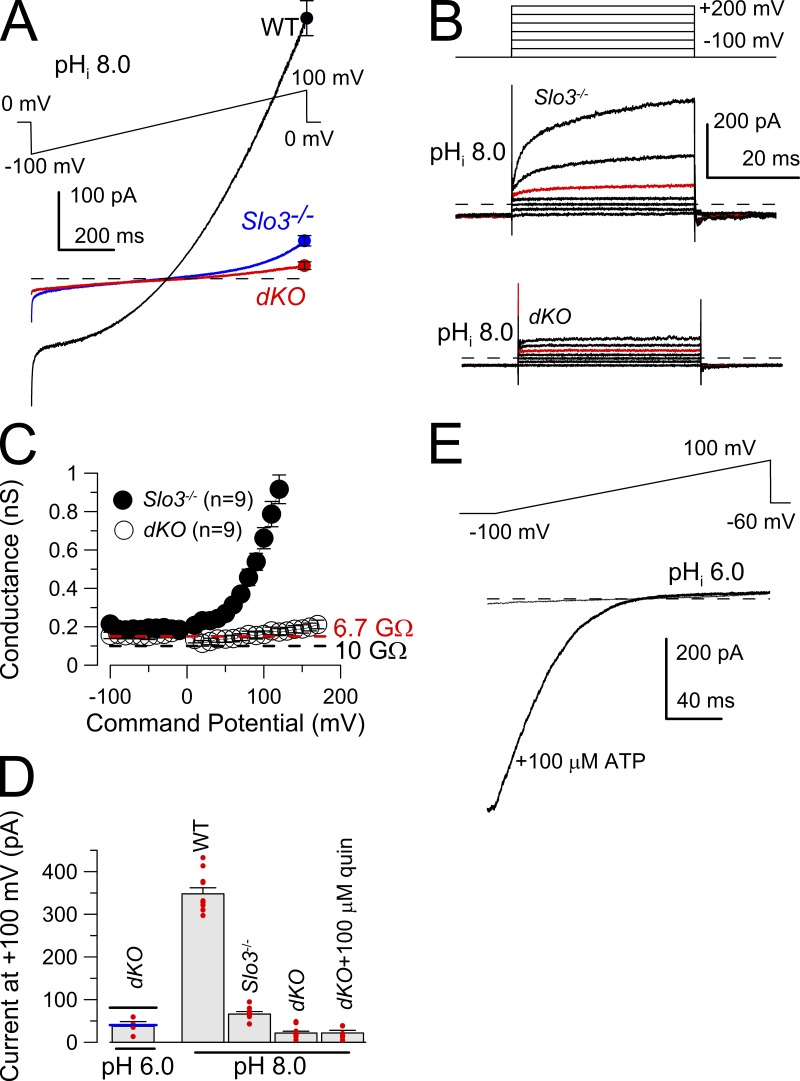Figure 1.
Alkalization-activated K+ current is absent in sperm from CatSper1 −/−Slo3 −/− (dKO) mice. (A) The indicated 1-s voltage ramp was used to activate current from WT, Slo3 −/−, and dKO spermatozoa. Each trace is the mean of currents (point corresponds to mean ± SEM at 100 mV) activated by the ramp protocol in six sperm of each genotype. Pipette pH was 8.0; intracellular and extracellular salines each contained 160 mM K-MES, with 2 mM extracellular Ca2+. (B) The indicated voltage step protocol was applied to a Slo3 −/− sperm and a dKO sperm, with the red traces being the step to 100 mV. (C) Currents activated with the protocol shown in B were converted to conductances for nine Slo3 −/− sperm and nine dKO sperm. The red dashed line corresponds to the mean of conductances in the dKO sperm over the range of −100 to 100 mV and equates to a resistance of 6.7 GΩ. The black dashed line indicates a 0.1-nS conductance, typical for the seal conductance for a 10-GΩ pipette seal. Pipette saline was pH 8.0. Error bars are SEM. (D) Mean current (error bars are SEM) measured at 100 mV is compared for the three genotypes, along with individual estimates (red circles). Values for Slo3 −/− sperm differ significantly (P < 0.003) from those of dKO sperm. The horizontal lines associated with the pH 6.0 estimates for the dKO sperm correspond to earlier mean current measurements for WT (black; 81.8 ± 7.9 pA [Zeng et al., 2011]) and Slo3 −/− (blue; 40.3 ± 2.9 pA [Zeng et al., 2011]) sperm. (E) The indicated 200-ms voltage ramp was used to activate current from a dKO spermatozoa, before and during application of 100 µM ATP. Pipette solution: pH 6.0. Extracellular: HS solution. (A, B, and E) The dashed lines represent 0 current level.

